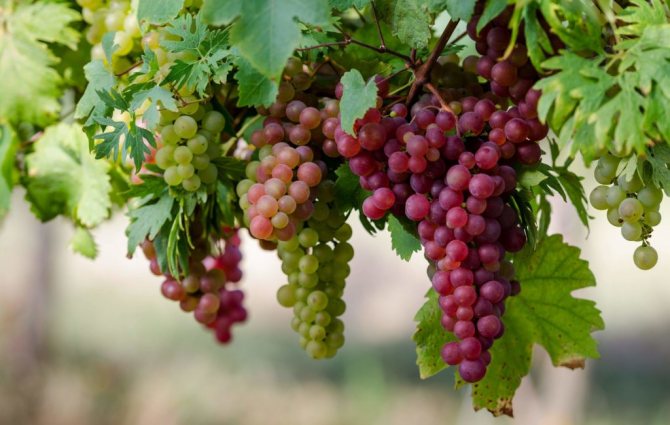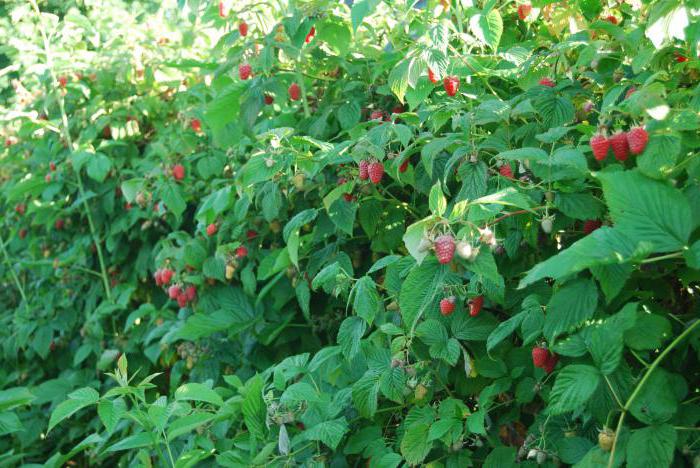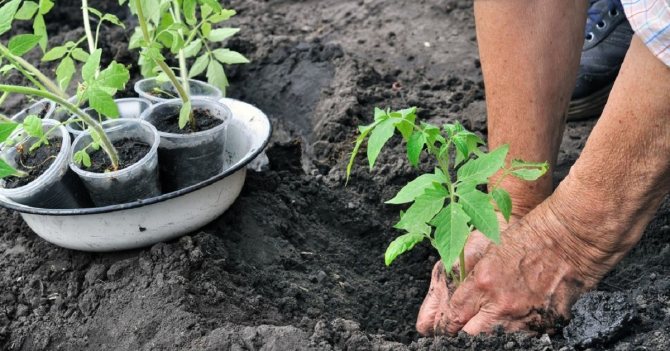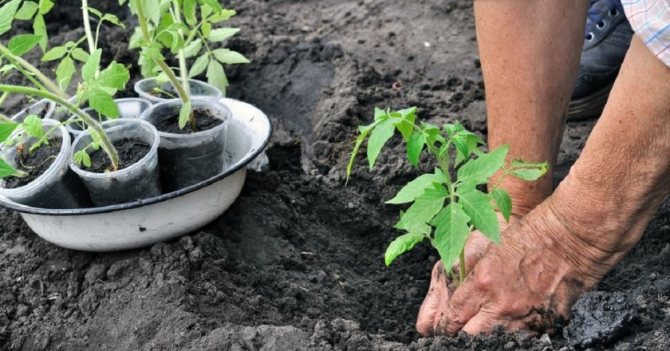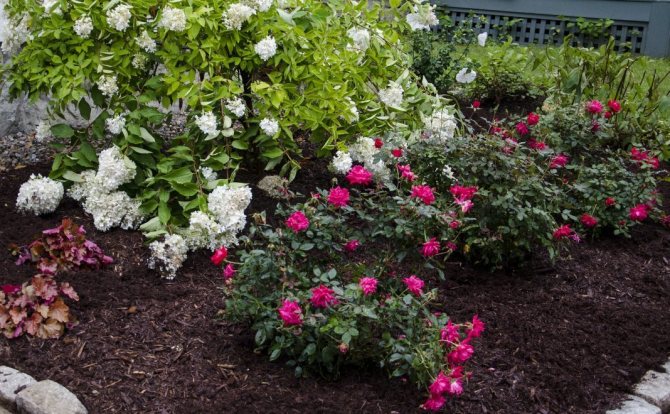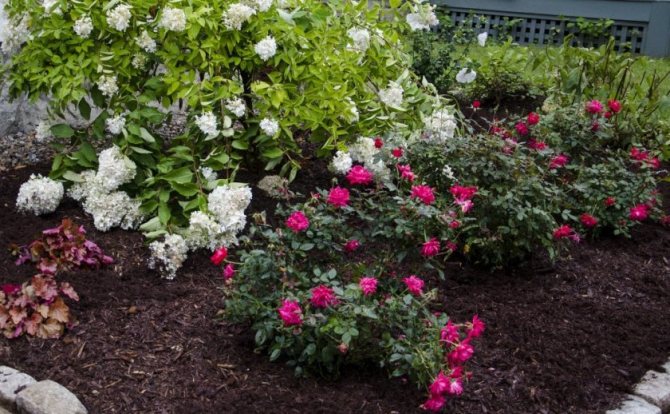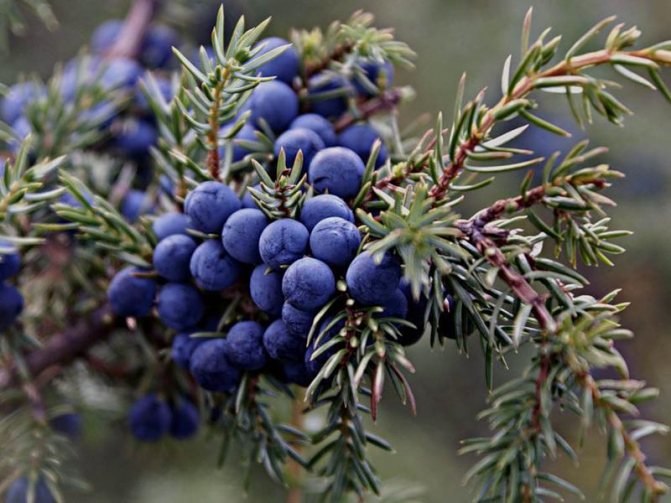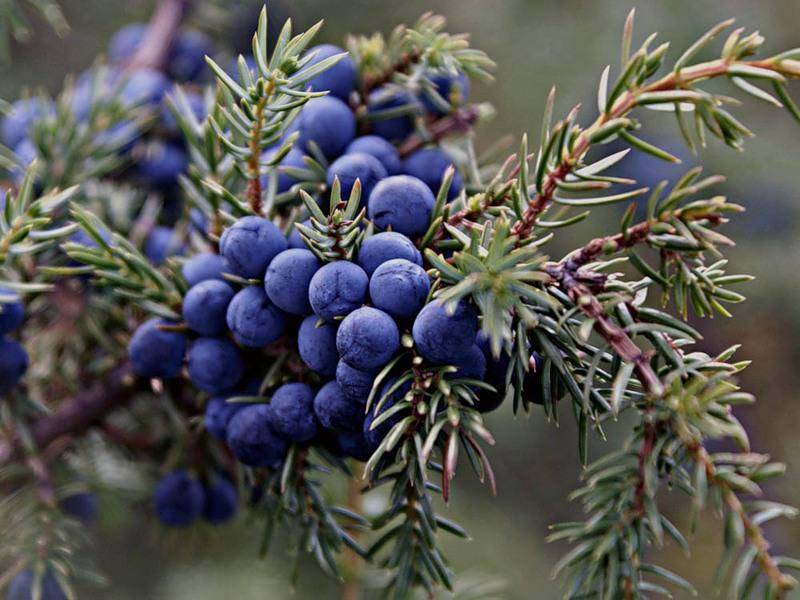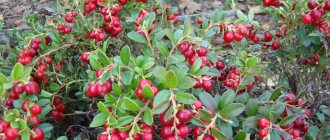Regardless of the region, climate and size of the summer cottage, few people refuse to grow raspberries - a delicious, sweet, aromatic berry. Beloved by many, since childhood it is known as a pleasant medicine for colds. Juicy healthy raspberries are a real natural treasure of vitamins, microelements and organic acids necessary for human health.
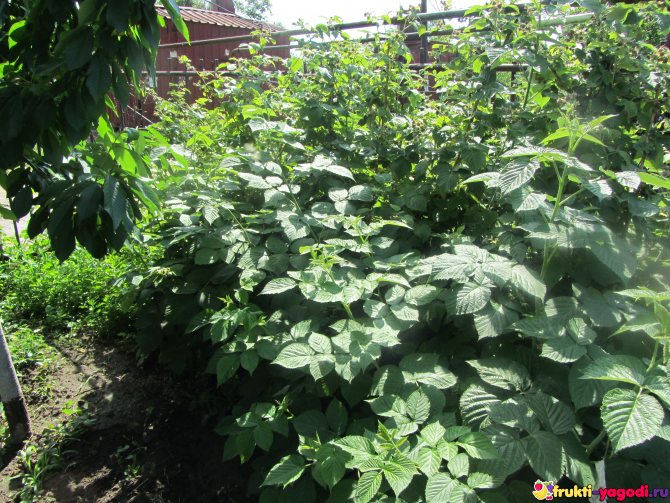
Raspberries get along well alone.
In order for the fragrant harvest to be generous every year, the berry bushes need to create the right conditions. The raspberry picker is demanding on the sun, moisture, soil fertility, protection from winds, frosts, waterlogging. Rarely does anyone think that the health and productivity of this berry plant also largely depend on the companion plants that have settled next to it.
Why can't you plant some plants nearby? A bit of boring theory
In the plant world, as in any biological community, there are certain relationships between different species.
Plants that are geographically in close proximity affect each other in different ways:
- positively,
- depressingly
- neutral.
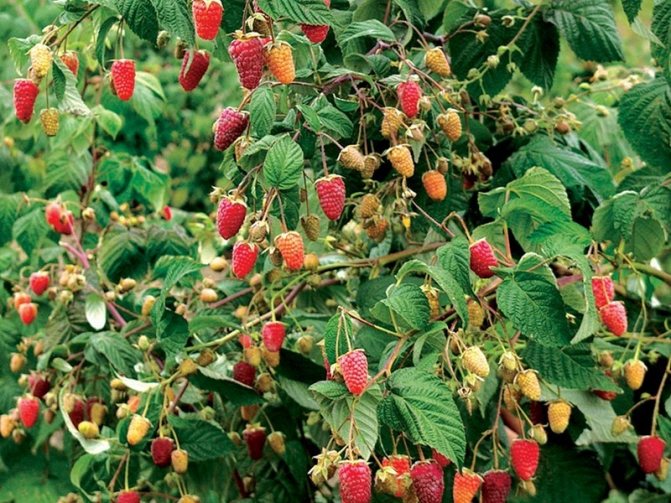

Raspberry bush does not get along with all plants.
There is a cooperative relationship - when green partners help each other in growth and development. There are frequent cases of a depressing effect on the immediate environment during joint growth: inhibition of development, deterioration in yield and taste of fruits, up to the complete death of a rival plant.
Depressing Substances
This phenomenon is explained by the natural competition of plants for light, moisture and nutrients in the soil, as well as the formation of colins by them.
Colins Are complex chemicals released by higher plants into the soil, air or water when they are washed off the leaves. Some plants also synthesize phytoncides - volatile biologically active compounds that kill bacteria.
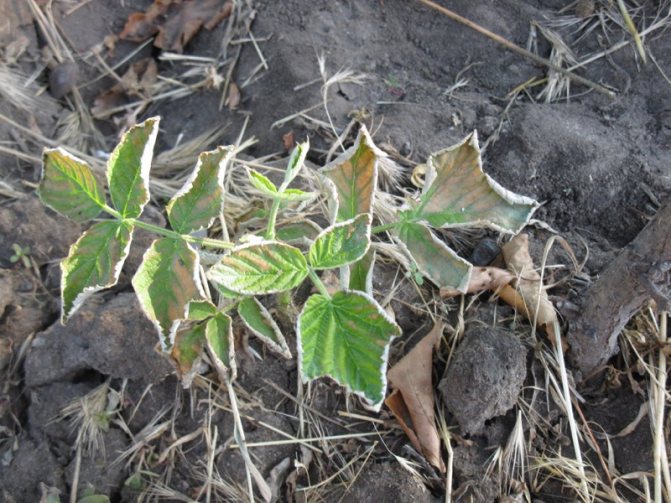

Raspberries can die if a competing plant is planted nearby.
Incompatible plant species cannot be planted together, especially if one representative of the flora is superior to another in terms of the level of inhibitory substances. But if the gardener aims to limit and "moderate the ardor" of some culture, then he can just take this effect into his arms.
Choosing a predecessor
Raspberries are sensitive to nitrogen content, so legumes and cereals are the best precursors for it, which saturate the soil with this useful element. The berry bush feels good after vegetables, with the exception of nightshades. Potatoes, tomatoes, peppers, eggplants and other members of this family are considered the worst predecessors for raspberries.
In order to avoid contamination of the culture with dangerous viral, bacterial and fungal diseases, it is not recommended to break the raspberry bushes where berry bushes used to grow. Strawberries are also an unfortunate predecessor for raspberries. These berry crops have a common worst enemy - the raspberry-strawberry weevil, the females of which lay eggs in the buds and gnaw the pedicels.
Read also: How to insulate a log house inside
Who is stronger than raspberries?
Raspberries are the tastiest, sweetest, and most loved of all known garden berries. Each ripe berry is a real natural multivitamin capsule.Plus easily digestible carbohydrates, fiber, pectin, minerals, organic acids. Probably, nature wanted as many people and animals as possible to feast on and heal with juicy and healthy fruits. How else to explain the fact that she endowed this plant not only with amazing properties, but also with the character of the aggressor. Raspberry always behaves in a proactive manner, self-confidently capturing new territories and displacing neighbors. In conditions of a shortage of free space, the owner of the garden plot is forced to take decisive measures against the growth of the raspberry "jungle".
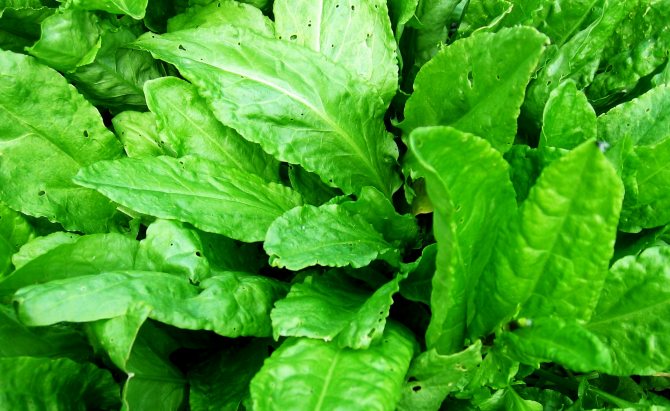

Sorrel will stop the raspberry bushes from spreading.
For raspberries, sorrel is a retaliatory aggressor that surpasses it in this quality.
Sorrel with its high acidity, planted along the perimeter of the raspberry tree, will stop the spread of bushes around the site. It has been noticed that the "sorrel" border strip acquires a restraining force if its width is not less than 50 centimeters.
The sweep must not be removed!
It is interesting that the removal of a broomstick from the row spacing, which is considered a weed, is recognized by experts as a mistake.
With her strong root system, this tenant inhibits the development of the adventitious roots of the shrub, as if giving a signal - "busy". In addition, the broom prevents the soil in the moisture-loving raspberry from drying out.
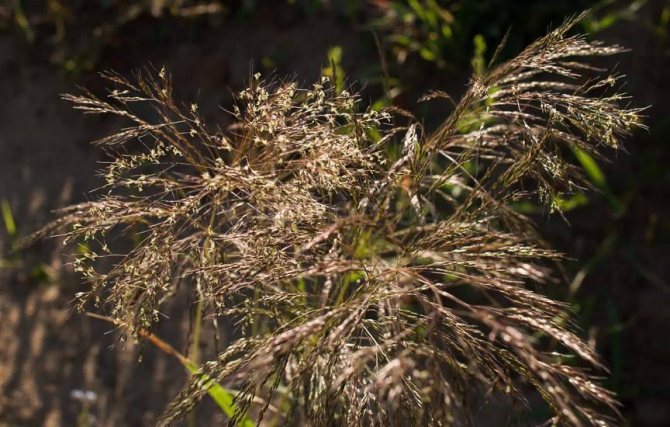

The sweep will not let the soil dry out.
Corn, grapes and sea buckthorn
The young growth of the bush is held back by the corn sown nearby. Raspberries will not be comfortable next to grapes and sea buckthorn.


Do not plant raspberries next to sea buckthorn.
At what distance to plant different varieties of raspberries. How to arrange raspberries on the site
There are different ways to grow raspberries. Often it is planted in a large curtain, placing the plants in a 50 × 50 cm pattern evenly over the entire area, while burying the stems into the soil when planting by 3-4 cm. If you plant raspberries deeper, the stem can rot, and if higher, there is a danger of freezing landings in winter.
It all ends with a planting, since there is no further care for raspberries. It grows by itself, like in a forest. No top dressing is done, the old stems are not cut out, the leaves are not harvested. Only hosed over the soil in dry weather. The underground part of the raspberry lives for about 12 years, so after this time the curtain will have to be moved to another place.
However, more often raspberries are grown along the boundaries of the plot in one or two lines, placing the bushes at a distance of 80 cm from each other, and the rows at a distance of 1 m.The width of the row for raspberries should be about 40 cm.All the shoots that fall outside this limitation should be cut, otherwise the raspberries will creep around the plantings for a rather long distance. When planting in rows, it is more convenient to dig not separate holes for each bush, but a continuous trench into which to plant the plants.
Raspberries can be planted in single bushes throughout the area in full sun. But then, before planting in the center of the future bush, a piece of water pipe about 2 m long is driven in, burying it into the ground by at least 40-50 cm. Having planted two plants at once on both sides of the pipe, as you grow, you will tie them to this support, just pulling all the stems lightly with a rope into a bundle.
Several different varieties should be planted, since raspberries require cross-pollination. In addition, it is necessary to have varieties of different ripening periods in the raspberry plant.
Raspberry seeds are mainly carried by birds. In bird stomachs, the seeds themselves are not processed, only the strong seed coat softens slightly, which contributes to their rapid germination. When propagating raspberries with seeds, you should remember this and before sowing the seeds, scarify (break the seed coat by rolling the seeds on sandpaper) or soak for about half an hour in a weak solution of hydrochloric acid or in gastric juice (sold in a pharmacy).
Friendship: with whom and against whom?
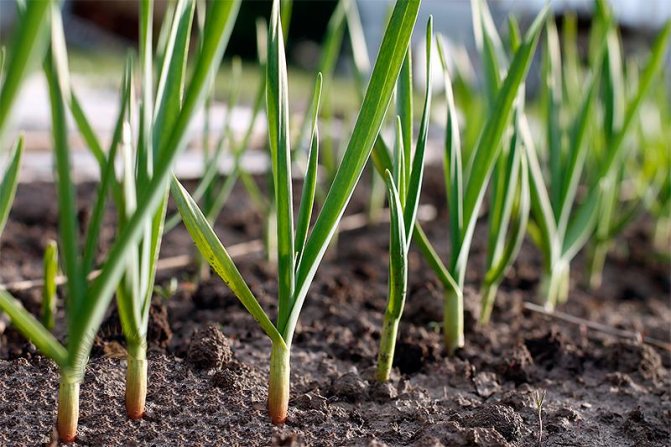

Garlic repels insect pests.
Many plants have the ability to repel insect pests and even protect against disease.
- For example, calendula successfully fights raspberry fly... Spicy herbs (garlic, parsley, marjoram, basil) and flower plants with a specific aroma (marigolds, yarrow, tansy, chamomile) emit volatile substances into the air, interrupting the smell of the plant - the “breadwinner” by the pests. Not feeling it in this place, the insect flies away to another territory.
- Undeservedly expelled from the site nettles, getting along well with raspberries, also reduces the number of insects attacking tender juicy berries.
- The role of the guard will also be played by the characteristic aroma of the growing nearby red elderberry.
How to choose the right place for planting blackberries
Blackberry, resistant to winter cold and drought, is nevertheless very demanding in choosing a site for planting its bushes. Swampy and lowland places are categorically unsuitable for growing blackberries, since in this case there is a great danger of stagnation of moisture in the soil. An excess of water has a bad effect on the health of the root system of blackberry bushes - it begins to rot, which can lead to the death of the plant.
In order to choose the right area for blackberries, you must be guided by the following criteria:
- Preference should be given to areas located on a low elevation, for example, the slope of a low hill is suitable.
- Blackberries do not tolerate the effects of strong winds, therefore, it is desirable to have a natural or artificial protective fence on the border of the site.
- Photophilous blackberries will feel good in a sunny area.
- As for the composition of the soil, loam or sandy loam soil is an ideal choice.
- The optimum pH for blackberry bushes is 6.
- It is recommended to place blackberries in areas where the groundwater depth is at least one and a half meters from the ground surface.
What is best to plant next to raspberries


Apple trees get along well next to raspberries.
- The best girlfriend for raspberries is rightfully considered Apple tree... These cultures not only coexist peacefully, but also help each other. The raspberry saves the apple tree from scab, and the apple tree saves the raspberry from gray rot.
- The nearby dill beds increase the yield of raspberries, attracting pollinating insects to its flowers. Plus, dill is very healthy.
- Raspberry won't mind the neighborhood with plum, pear, mountain ash, red and black currant, honeysuckle... It is good to plant tomatoes next to it.
- Ornamental crops will decorate raspberry plantings and help them grow: bushes of roses, barberries, various types of junipers.
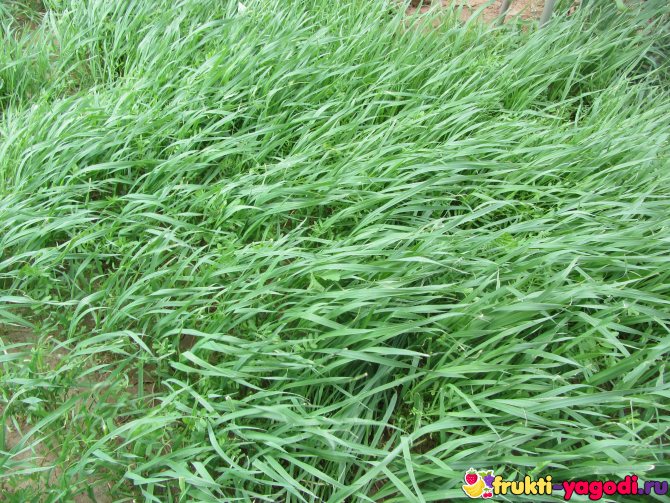

Siderata will help increase the fertility of the land.
Raspberries are very demanding on the fertility of the earth. Some gardeners advise planting a herbal mixture of vetch and oats along the aisles of the raspberry tree. The combination of a legume plant with a cereal plant will play the role of a green fertilizer: it enriches the soil with nitrogen, nutrients, helps to loosen it, and suppress weeds.
Plants that scare off pests
Raspberries are among those plants that often suffer from the invasion of insect pests, so the gardener will have to make every effort to protect the future harvest. The radical solution to the problem is the use of insecticidal chemicals, but if you want organic berries, then it is worth investigating the issue of beneficial crop compatibility in this regard.
It is best to plant raspberry bushes next to fragrant plants that can repel the pest.... For example, they will grow well next to a red elderberry, the smell of which is well noticeable within a radius of several meters from the plantings. They also proved to be quite good marigolds, garlic, fern, coriander and celery, often found not only near raspberries, but also near blackberries or strawberries.
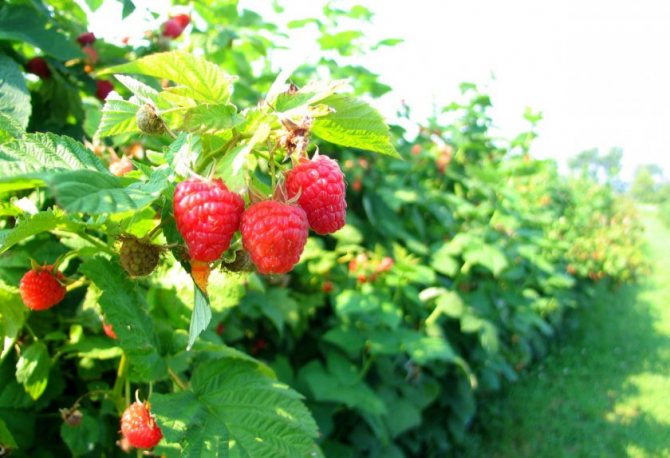

Plants that are compatible with each other mutually support each other throughout the entire period of growth and development, therefore, if you have not yet planted raspberries on your site, the issue of a competent neighborhood should be given increased attention. When combined with responsible follow-up, this action will help you maximize your yield and protect you from unnecessary problems.
They do not love each other
Raspberries and strawberries are bad neighbors, mutually oppressing each other... They have common pests and diseases, the root system is located at the same level and competes for access to nutrients.
Cherry closeness also causes oppression of raspberries, a decrease in the yield of berry bushes.
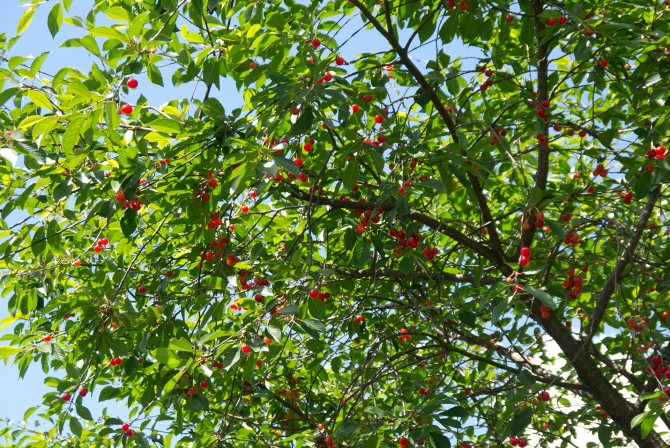

Cherries have a negative effect on the growth of raspberries.
Corn, grapes and sea buckthorn: characteristics of each "neighbor"
Like the previous plant, corn can hold back raspberry plantings from overspreading the sitewithout causing serious harm to existing bushes. The only thing that the cereal crop can do harm in this case is to close the raspberries from the sun's rays, which will negatively affect the size and taste of the future harvest of berries.
Neighborhood with grapes and sea buckthorn is more undesirable for raspberries, since the rhizome of all three plants is approximately at the same level and will compete for nutrients and moisture in the soil. Since sea buckthorn is stronger in development, it is likely that all the bushes of the latter will begin to lag behind in growth and will soon wither away completely.



